Pruning Hydroponic Crops
Greenhouse Hydroponics
Hydroponics is the cultivation of plants in water using inert material like rockwool or perlite rather than soil. Hydroponic production is often found in greenhouses due to the controlled conditions of temperature, light and humidity, which allow for increased plant growth. Hydroponics in a greenhouse allows for year-round production, allowing growers to benefit from high market value for off-season production.
Common Crops
The crop to be selected for greenhouse hydroponics production should have a high market value, year-round consumer demand and should not have a spreading growth habit. Among vegetables, tomatoes, peppers, cucumbers, leafy greens and herbs are great choices for hydroponic production. Fruits like strawberries, blueberries and raspberries are becoming more common.
Maintenance of hydroponic crops
Due to the higher growth rate of crops grown in hydroponics, plants require greater maintenance, compared to crops grown in soil. Trellising, pruning, harvesting and nutrient solution monitoring are some of the maintenance factors which need to be checked frequently in hydroponics. Pruning of hydroponic crops is discussed in this fact sheet.
What is pruning?
Pruning is a practice of purposeful removal of plant parts like branches, buds or roots without affecting the yield of a plant by maintaining the balance between vegetative and reproductive growth. The purpose of pruning may vary according to different types of plants. Improper pruning may harm plant health, stability, appearance and lead to a reduction in plant yield, so proper pruning is essential. Some of the reasons for pruning greenhouse hydroponic crops are to:
- enhance health and vigor,
- allow high planting densities,
- increase fruiting and flowering,
- prevent or repair damage,
- easily spot and pick mature fruits,
- control size of plants, and
- increase size and quality of fruits and vegetables.
General rules of pruning
- Remove any dead branches.
- Remove branches from the aisle.
- Remove diseased branches when plants are dry because water can spread disease.
- Do not prune more than a 1/3 of the plant at one time.
- Prune crossing branches that rub together.
- Remove branches to let air and sunlight into the lower canopy.
Pruning in hydroponics
Pruning is important for plants growing in every environment, but is very crucial in hydroponics. Growth rates are generally higher in hydroponics. Without regular pruning, excessive growth, which is very hard to manage, can occur. The root systems of hydroponic plants are not as strong as plants growing in soil because roots do not have to spread out in search of nutrients. Plants in hydroponics are not able to support heavy loads due to poor anchorage of the roots. Pruning is also important for greenhouse production because, due to higher cost per square foot, growers need to use the area very efficiently. Therefore, pruning allows high density planting and greater quality products.
Tomato Pruning
Tomato is a common hydroponics crop. Pruning is crucial for tomato production, as it ensures proper utilization of energy in growth of fruits and the main stem. Pruning is required for indeterminate types, plants which continue growing and flowering, as 50 percent of tomato yield is reduced without pruning and trellising. Indeterminate types of tomatoes, also called vining tomatoes, can grow up to a height of 10 to 12 feet, while 6 feet is a normal height. The best way to prune tomatoes is to maintain one main stem, and remove all suckers (side shoots). Hand removal of suckers 2 to 2.5 mm in length once a week is the best method of pruning tomatoes (Figure 1). At this size, suckers can be easily broken by hand without injuring the main stem.
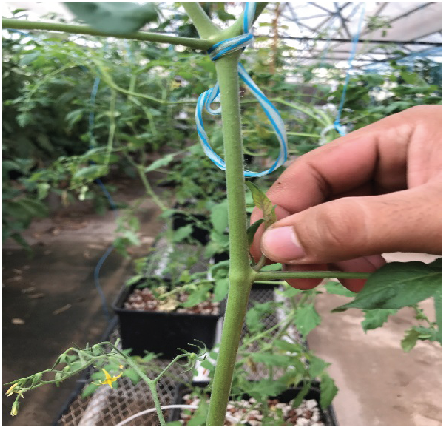
Figure 1. Hand removing of tomato sucker.
Also important in pruning tomatoes is removal of lower leaves. These are the older leaves which turn yellow and are susceptible to diseases, so removal of these leaves every other week is necessary. The best way to remove these leaves is to bend them upward first and then pull down as to prevent peeling of the skin on the stem. Do not use scissors to remove leaves. Pruning will make harvesting easier and increase air circulation within a plant, thus lowering disease development. These removed leaves should be removed from the greenhouse.
Sweet Pepper Pruning
Pruning of sweet peppers in hydroponics will reduce production cost, increase yield
and reduce disease susceptibility. Sweet pepper pruning is different from tomato pruning
because peppers do not produce side shoots like tomatoes. After pinching (removal
of the plant tip), the top two nodes start to grow. The main objective of sweet pepper
pruning is to develop a strong vegetative frame for supporting fruit growth and weight
during production. It is different from field-grown peppers because that all flowers
are allowed to develop in field-grown peppers, while some flower nodes are pruned
in hydroponic peppers. This is because hydroponic peppers are allowed to produce for
a period of eight months, while field-grown peppers generally produce for two to three
months. Here are the steps for sweet pepper pruning:
- Remove the growth point or stem tip after the first 15 inches (400 mm).
- After that, treat each of the two stems as an individual and alternate between removing
the inner and outer side shoot from each main stem (Figure 2).
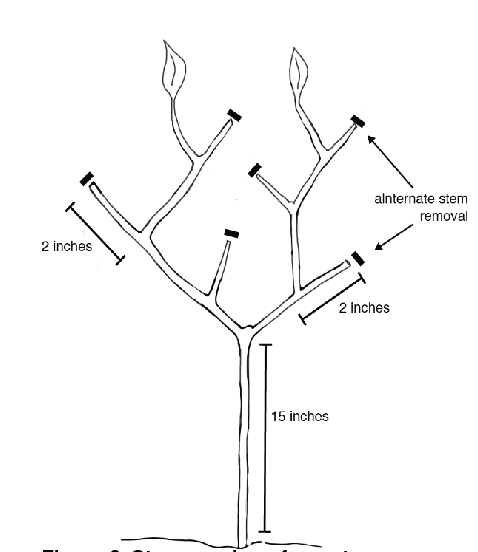
Figure 2. Stem pruning of sweet pepper - Remove the side shoot when at a length of 2 inches (50 mm) using your hand, as at this length it is easy to remove stems without use of scissors or a knife.
- To increase plant vigor, remove the first cluster of flowers also known as the crown bud (Figure 3).
- On each individual stem, remove alternate flower clusters (Figure 3). Heavy fruit load on a plant may lead to lower fruit quality and may cause physiological disorders like blossom end rot.
- Completely remove any yellow leaves from the greenhouse.
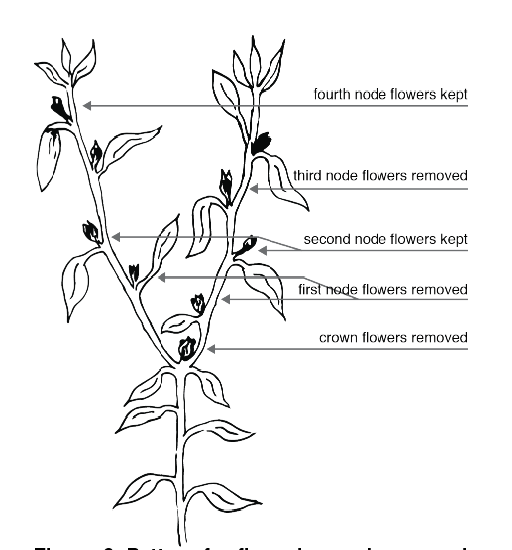
Figure 3. Pattern for flowering node removal in sweet peppers.
Cucumber Pruning
Cucumber pruning is different than tomato pruning because cucumber yield is directly proportional to leaf area. So, removal of more than one leaf at a time is not recommended in cucumber. There are various pruning systems utilized for greenhouse cucumber production: high pruning system, low- middle pruning system and umbrella renewal system. In all of these systems, the main stem is trained with a vertical piece of wire to a main support cable which is generally 9 to 10 feet high.
The umbrella renewal system is the most commonly used pruning method in modern greenhouses
(Figure 4). It is also known as the modified umbrella system. Here is the step-by-step
procedure for umbrella renewal system pruning of cucumbers:
- Allow the main stem of a plant to reach the main support cable by allowing the main shoot to twine around a vertical support cable.
- Remove all fruits up to 27 inches (600 mm) starting from the media then allow a single fruit per axil up to the main support cable.
- Pinch the main stem after reaching the main support cable and allow two side shoots to grow in opposite directions of each other.
- From each side shoot, allow two laterals. There should be no fruit along the main support cable.
- This will make up three laterals on each side of the main stem and allow them to grow downward from the main support cable.
- Pinch out the growing tip of each lateral as they grow back to the height of the container.
- A single fruit is allowed per axil, but if production of crooked fruits is found then a single fruit per two axils is better.
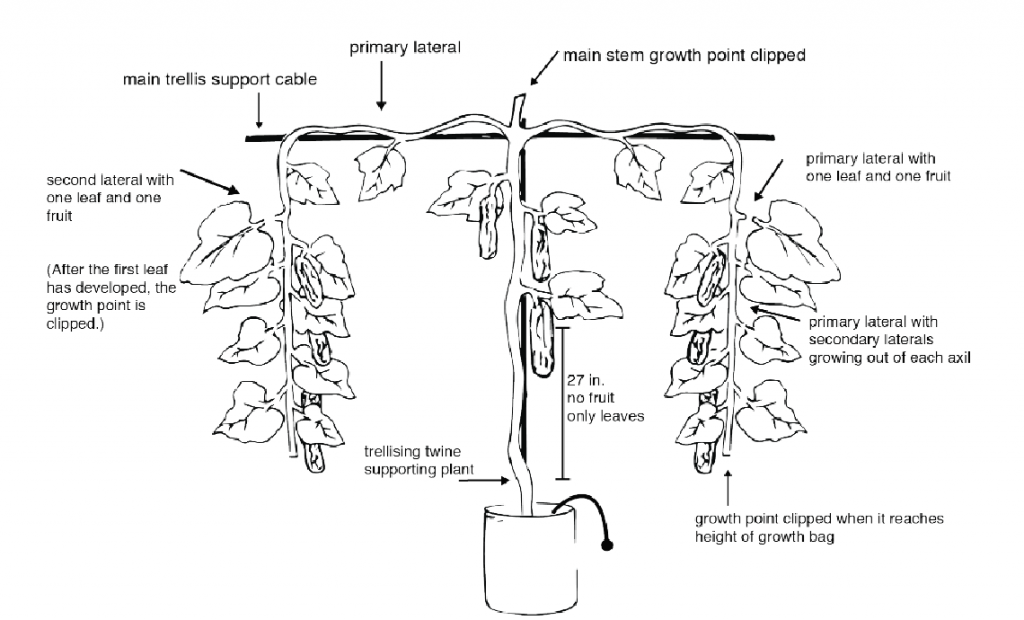
Figure 4. Umbrella renewal system of pruning in cucumber.
Strawberry Pruning
Strawberry pruning consists of leaf pruning, runner removal, flower pruning and crown pruning. Leaf pruning consists of removal of old leaves that start turning yellow and are no longer able to photosynthesize. These leaves also prevent air circulation and light interception into the canopy, thereby enhancing the chance of disease development. Growth of runners is common in strawberry, which is one method of reproduction. Growth of runners during the production period is unnecessary and a waste of carbohydrates, which can be used for flower production. Therefore, runner pruning is also important for good quality fruit production in strawberry.
Flower pruning in strawberry is done to promote vegetative growth or to promote production of large fruits. When plants are started from runners, plants need to establish a large crown. For crown development, the flowers developed during early growth are removed, so that sugars produced by photosynthesis (photoassimilates) are allocated to vegetative growth (Figure 5). The size of fruit is inversely proportional to the number of flowers. If there are a large number of small flowers produced, small fruit production is likely, so flower pruning is necessary for good quality fruit production.
Crown pruning is also important for flower bud induction in strawberry when plants are overly vegetative. During winter production, crown pruning is necessary for maintaining proper crown density in greenhouse strawberry production.
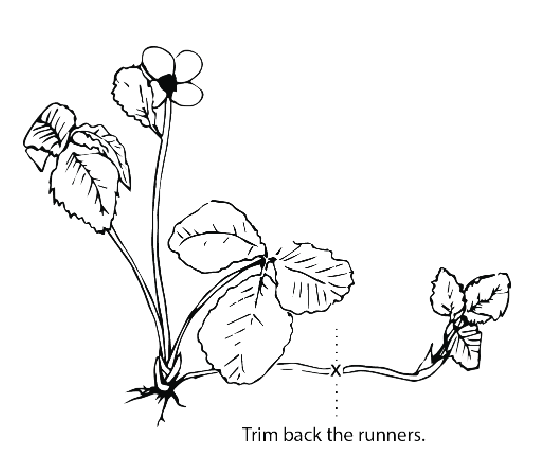
Figure 5. Flower and runner pruning in strawberry.
Blackberry Pruning
Blackberry pruning can be a bit hazardous compared to strawberry pruning because some cultivars have thorns. However, most modern blackberry cultivars are virtually thornless making these varieties is a lot easier to prune. It is recommended to wear gloves and use clean and sharp tools for blackberry pruning. Blackberries are not very fast growers, but regular pruning will allow for higher yields. Blackberries not maintained are more prone to diseases.
There are two types of blackberry pruning: tip pruning and clean-up pruning. Tip pruning is performed in early spring, while clean-up pruning is performed in late summer. In tip pruning, cutting off the tips of blackberry canes will force branching, creating more wood on which blackberry fruit will grow on. Cut canes back to a length of 24 inches and for canes shorter than 24 inches just prune the top inch. Cutting back tips will also lead to firmer canes that will be better able to support weight of fruits and leaves. During tip pruning, any diseased or dead canes should also be pruned. Clean-up pruning is necessary for regular fruit production in blackberry. Because blackberry canes older than two years will not produce fruit, it is necessary to remove canes which have already produced fruits once. This will encourage production of more first-year canes, which will lead to more fruit-producing canes the next year.
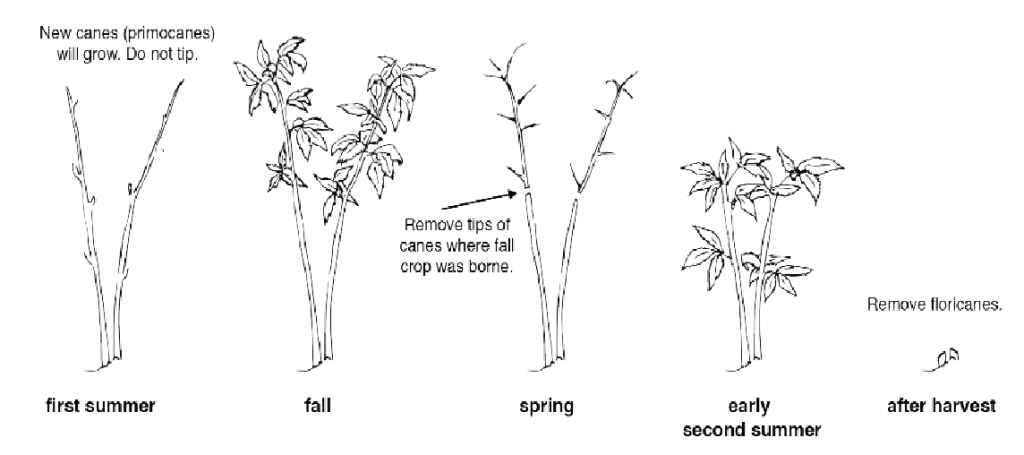
Figure 6. Tip and cleanup pruning in blackberries.
Hardeep Singh
Graduate Assistant, Vegetables
Bruce Dunn
Associate Professor, Floriculture
